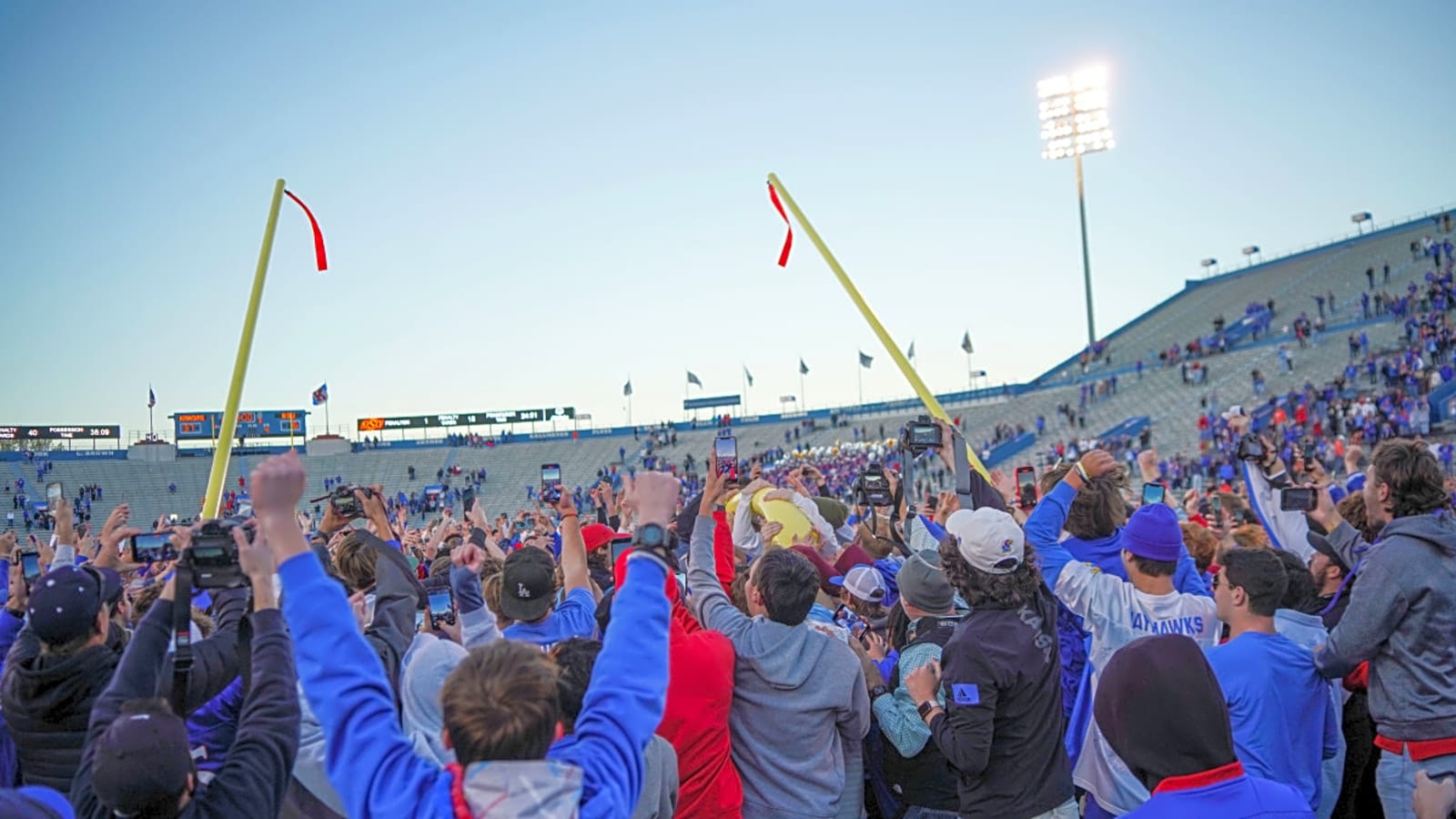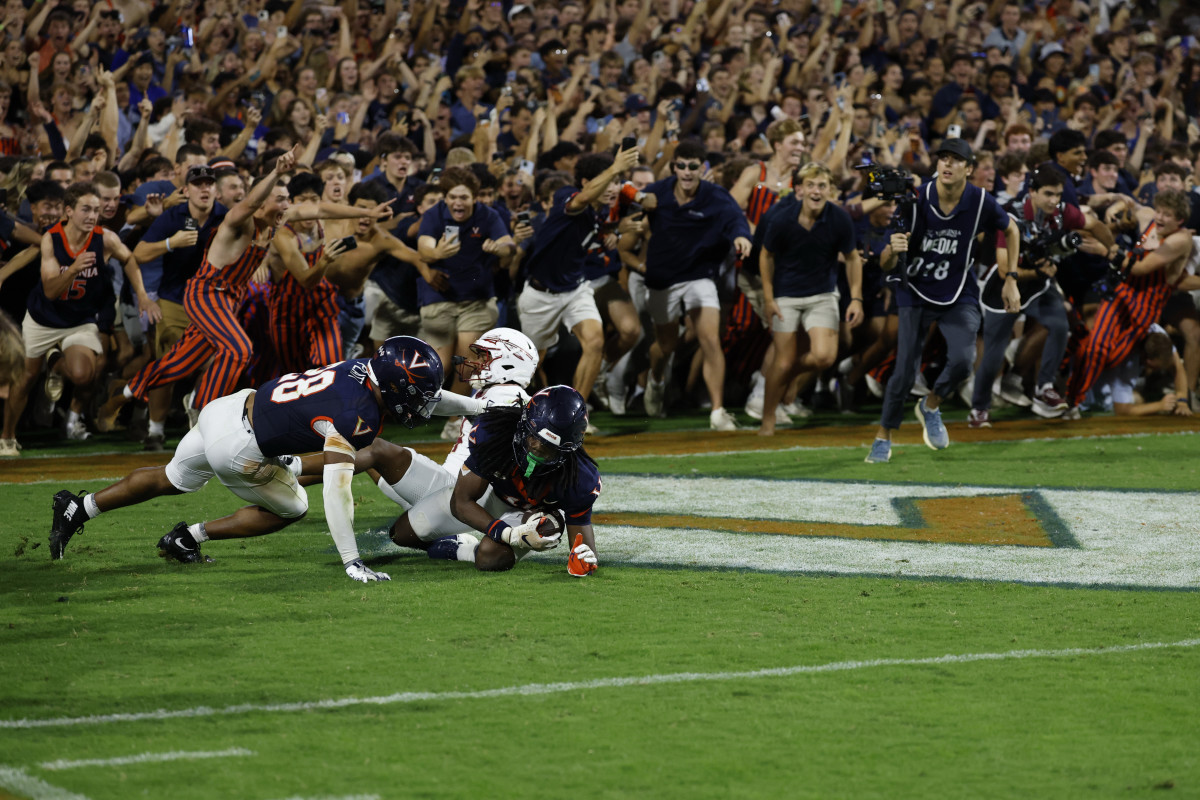
Fans of the Colorado Buffaloes became the newest contingent of college football fans to 'storm the field' in the 2025 NCAA Football season. After their team's surprise win over Big 12 rival No. 22 Iowa State on Saturday, October 11, thousands of fans flooded Boulder's Folsom Field.
The spectacle quickly generated traction on social media, with a video of a fan being pinned under a goal post accumulating nearly half a million views on X.
College football field storming has risen in popularity in recent years, with many labeling it emblematic of the American 'college experience.' It's true – storming the field is exhilarating. Together, thousands of 18-to-20-something students let their emotions—and their legs—run free in celebration.
The result: pandemonium. The consequences? Sometimes deadly.
Historical Dangers
Events attracting large crowds have always been dangerous. In the impassioned and unpredictable world of sports, an energized crowd can quickly turn deadly. Take the 1989 Hillsborough Disaster. On April 15, 1989, in Sheffield, England, a semifinal match between the Liverpool and Nottingham Forest football clubs ended in tragedy.
The overcrowding of Hillsborough Stadium's standing-room-only section led to a traumatic "crowd crush," an extremely dangerous scenario in which a large number of people become trapped in a constricted space with no accessible exit. After a stadium official opened an exit in an attempt to disperse the crowded pens, people flooded in, resulting in the fatal crush of 97 people towards the front.
While the infamous Hillsborough Disaster occurred over 35 years ago overseas, the underlying dynamics mirror the risks emerging in American college football.
Virginia's Field Storm Raises Eyebrows – and Red Flags
Thus, when onlookers saw Florida State's Marquarius "Squirrel" White disappear under a stampede of University of Virginia students on September 26, their concerns were justified. Before the Atlantic Coast Conference analysts could call 'game,' the Cavalier faithful had breached the end-zone, swarming Scott Stadium to celebrate their team's upset win over the No. 8 Florida State Seminoles.
With no adequate safety barrier separating the UVA student section from the playing field, the field rush was almost "instantaneous," with hundreds of students charging at full speed down the steep, grassy hill. Friends bent down to nurse injured friends, only to be knocked to the ground by fellow students. Players waved their helmets high above the crowd, as if to identify themselves in the orange and navy 'rubble.'

Quickly heralded as the "greatest field storm of all time," the win vaulted the middling Virginia Cavaliers into relevance (and their first top-25 AP ranking since 2019). It also sent 19 individuals to the hospital. Though the Virginia field storming dominated headlines this fall, its fallout was far from the worst-case scenario.
In 1993, a field storm triggered by Wisconsin football's win over the Michigan Wolverines resulted in 73 injuries, six of them critical. Ten individuals were reportedly unconscious when they were rescued from the mayhem.
Moving The Goal Posts
Though the so-called 'stampede' frequently produces injuries, the greatest danger of football field storming is not the speed and density of a crowd. It's the goal posts. Though the toppling of the 450 to 1800-lb goal posts remains a "time-honored tradition" for fans, the tradition is also deadly.
"Implications of Toppling Goal Posts in College Football: Managing Institutional Risk" from the Journal of Applied Sport Management asserts that "a considerable number of spectators engaged in tearing down goal posts have been seriously injured," including documented cases of spinal injuries, paralysis, and death.
In 1983, a woman's heart stopped after a falling goal post at a Yale football game field rush fractured her skull. In 2005, a University of Minnesota-Morris student died from head trauma after being struck by a falling goal post. A year later, a Ball State University student was permanently paralyzed below the waist when a falling goal post struck his back.
Now, back to Saturday, October 11, and to the video of the Colorado student pinned to the turf by a fallen goal post during a field rush. While his friends initially reacted with laughter, the student's fearful cries for "help" pointed to the tangible danger.
Someone sign that goal post on our D line pic.twitter.com/TjJLoBzel9
— Barstool Colorado (@CUBarstool) October 11, 2025
So, where do college football organizers go from here? With students often outnumbering security by staggering quantities, a field storm can sometimes feel inevitable. Fortunately, a solution could come from the goal posts themselves.
Whether by installing collapsible/retractable goal posts or vastly increasing security around the goal posts during a crowd surge, the steps taken to protect excited, often intoxicated college students from the towering metal structures could be a matter of life and death (Journal of Applied Sport Management).
Ultimately, few rules, physical barriers, or university-wide fines can stop a tidal wave of exuberant fans a fall night under the lights. Rather, institutions and conferences should focus on tangible, organizational steps to prevent disaster when the water rises.
College football may thrive on passion and unpredictability, but as history reminds us, even tradition must yield to safety.
More must-reads:
- Rockets, Kevin Durant agree to two-year extension
- Novak Djokovic abruptly quits match in Saudi Arabia, season in doubt
- The 'College basketball AP preseason No. 1 teams' quiz
Breaking News
Trending News
Customize Your Newsletter
 +
+
Get the latest news and rumors, customized to your favorite sports and teams. Emailed daily. Always free!








